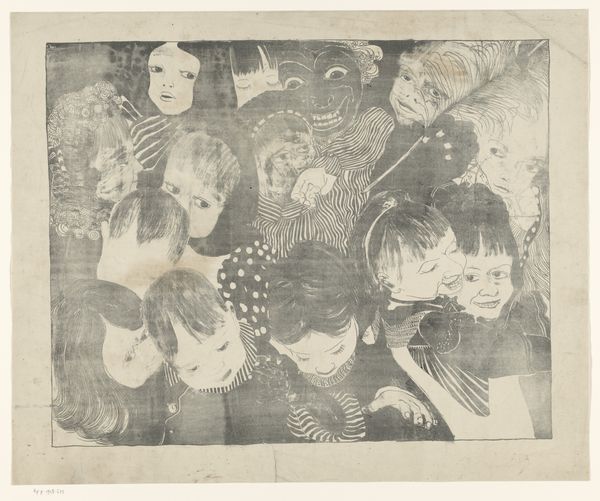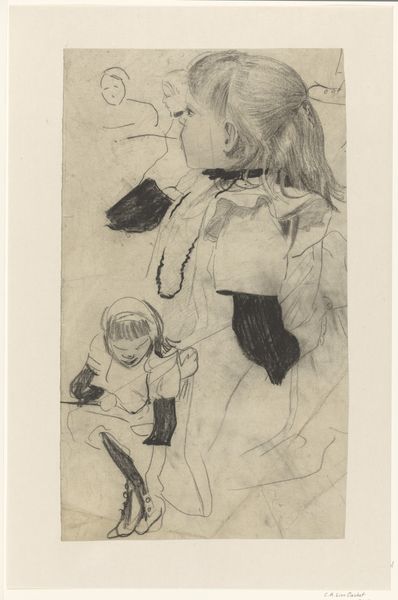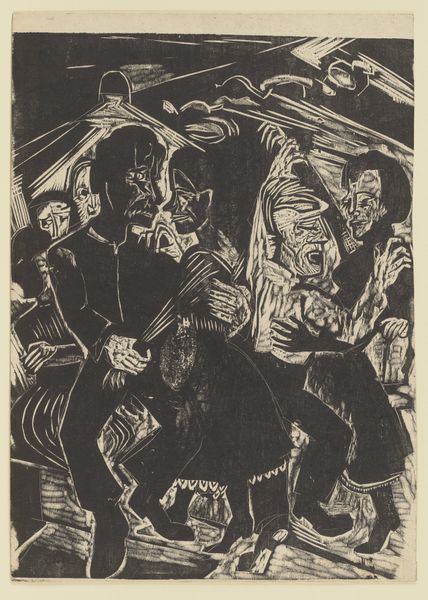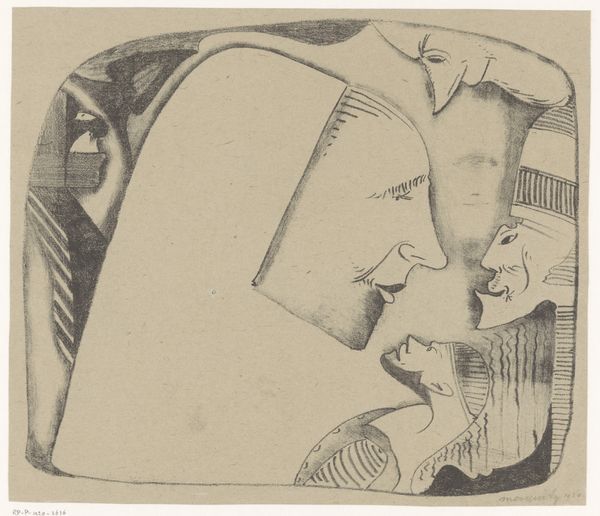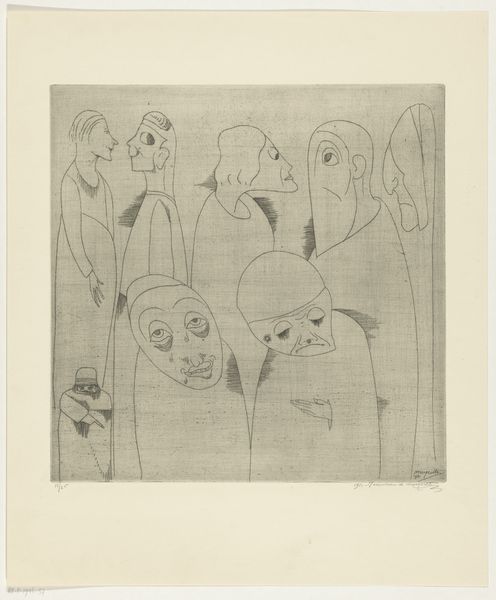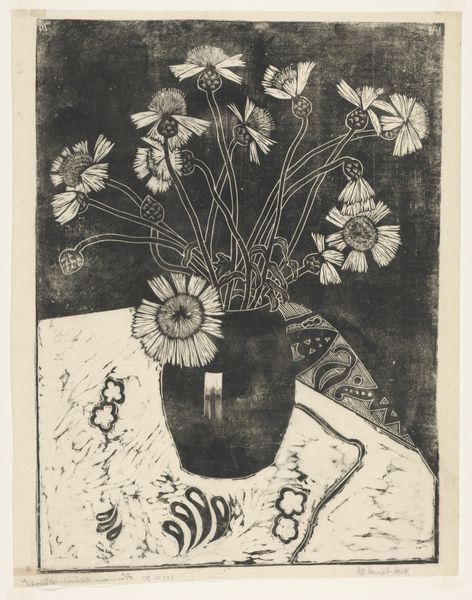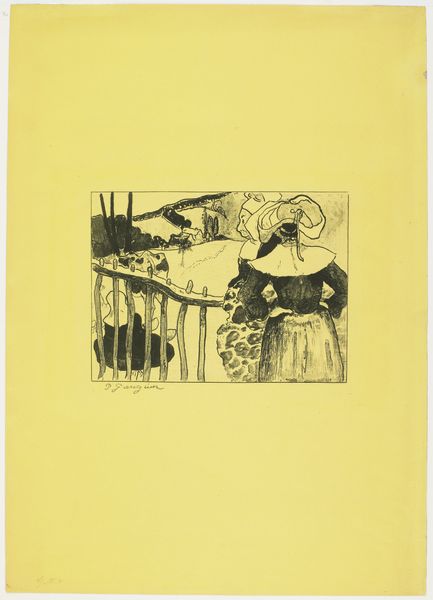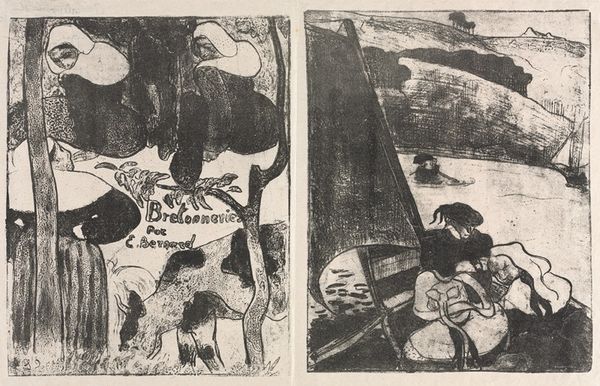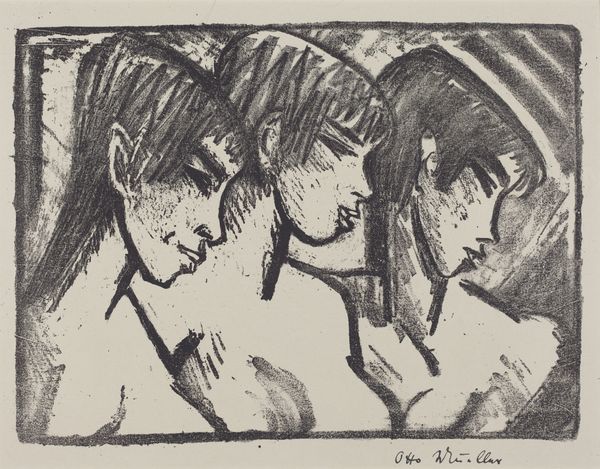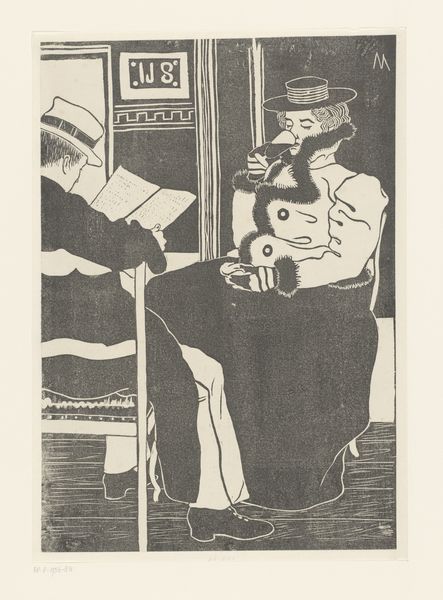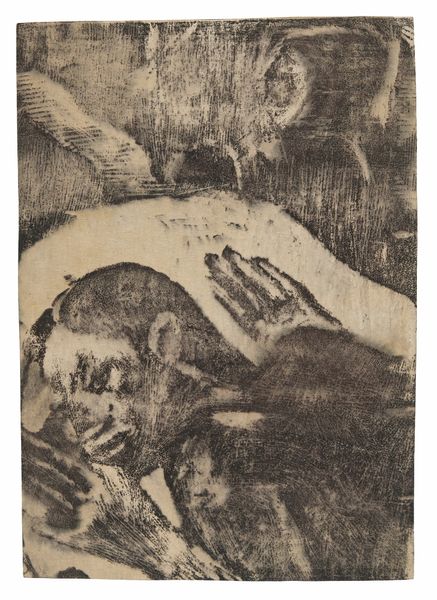
drawing, print, etching, ink
#
portrait
#
drawing
#
art-nouveau
# print
#
etching
#
caricature
#
caricature
#
figuration
#
ink
#
child
#
symbolism
#
history-painting
Dimensions: height 525 mm, width 315 mm
Copyright: Rijks Museum: Open Domain
Editor: This is "Kinderhoofden en grijnzend gezicht," or "Children's Heads and a Grinning Face," an etching in ink by Carel Adolph Lion Cachet, dating from around 1895-1896. The composition is incredibly striking—or perhaps unsettling is a better word? What do you see in this piece, focusing on the formal elements? Curator: Indeed. Let us first observe the stark contrast between the light and dark areas. Notice how the artist uses densely etched lines to create depth and shadow, particularly in the grinning face at the top, and contrasts that with the relatively sparse lines in the children's faces. This dichotomy enhances the emotional intensity. The arrangement, a dense cluster of faces within a defined rectangular frame, creates a sense of claustrophobia. What do you make of the different textures? Editor: I see that some faces appear smoother and others have rougher, almost frantic lines. Is it fair to consider how Cachet created a dynamic composition using what is there but also what isn’t? Curator: Precisely. The use of line weight and density directs the eye and emphasizes specific features—the prominent teeth in the grinning face, or the tears streaming down another. Observe, too, the simplification of form, the exaggeration of features. The artist is playing with our perception. Ask yourself if the overall impression is intended to be decorative or symbolic through such artful decisions. Editor: I appreciate that. The textures and strategic line choices definitely amplify the intended expression rather than acting as mere representations. I think it definitely makes the piece symbolic, even without knowing exactly what it alludes to. Curator: Then we have learned something new. Formal analysis reveals artistic intention. The method gives you the tools to analyze unfamiliar artworks!
Comments
No comments
Be the first to comment and join the conversation on the ultimate creative platform.
